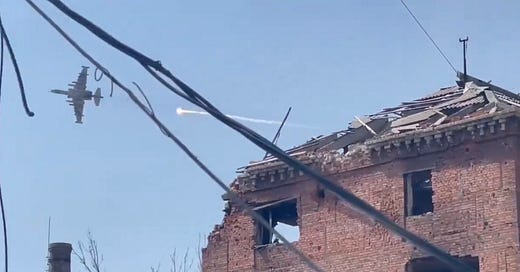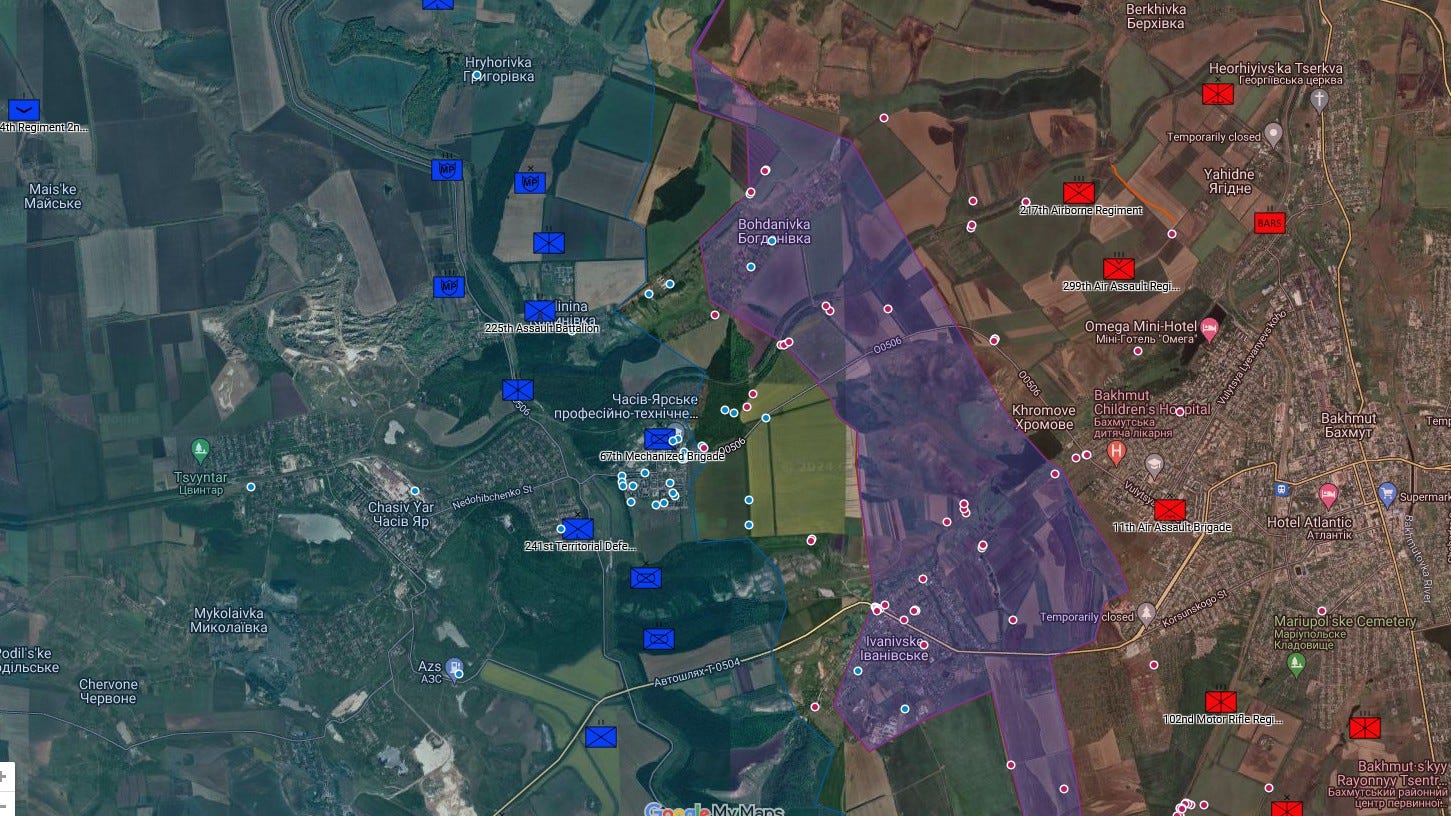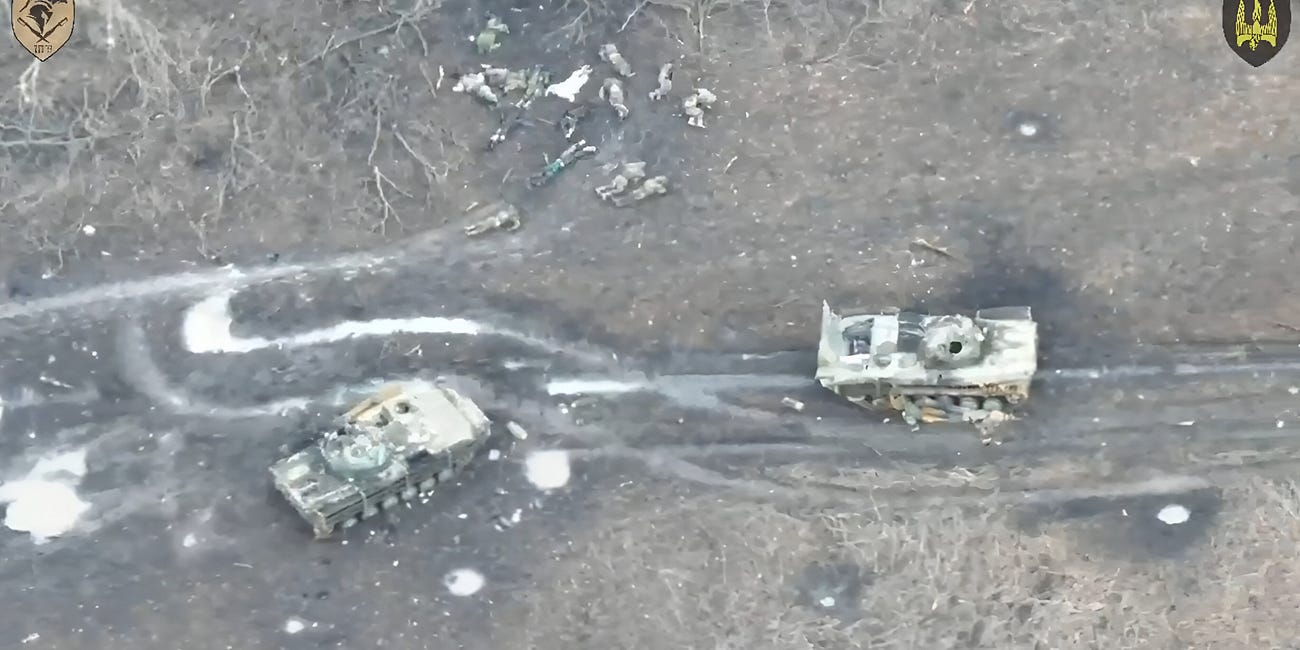Chasiv Yar Is Russia's Next Objective After Avdiivka. Will Republicans Betray It, Too?
The Ukrainian garrison depends on ammunition the Republicans are withholding.
Two months after finally occupying the ruins of Avdiivka following a costly, five-month battle, the Russian army in Ukraine has focused its troops, tanks and artillery on another eastern settlement: Chasiv Yar.
A major battle is developing. One with potentially serious implications for Russia’s 26-month wider war on Ukraine. But where the Ukrainians could retreat from Avdiivka without risking a broader collapse in their defensive line in the east, it might be more dangerous for them to quit Chasiv Yar.
Which is why Russian gains on the town’s eastern edge in recent weeks are so concerning for friends of a free Ukraine.
“If Ukraine were to lose control of Chasiv Yar, it could have dire consequences, as it would provide a direct route for the Russian army to advance towards key cities in Donbas such as Kostyantynivka and Kramators'k,” the Ukrainian analysis group Frontelligence Insight explained.
Ukrainian control of the industrial town, which had a pre-war population of 12,000, is looking more tenuous as Russian troops have advanced into two villages—Bohdanivka and Ivanivske—just across the canal threading north to south along Chasiv Yar’s eastern edge.
Potentially even more concerning is Russian advances into the one neighborhood of Chasiv Yar that lies just across the canal. Last week, Russian rocket-launchers and 2S4 siege mortars pummeled the canal district—and, on April 4, Russian troops motored in on tanks and fighting vehicles. Russian air force Sukhoi Su-24 attack jets flew in support.
Normally, the Chasiv Yar garrison—the 67th Mechanized Brigade and other units—would mine the approaches to the canal district, bombard assaulting Russian columns with artillery and first-person-view drones and shoot down any Russian jets flying overhead. For some reason, last week, it didn’t.
“In our team's assessment, the situation is difficult due to the accumulated effect of multiple problems,” Frontelligence wrote. “These include delays in initiating fortification construction, an inadequate number of personnel and units due to delayed mobilization efforts and a lack of urgency in implementing necessary changes to the mobilization process.”
“Additionally,” the group added, “there is a shortage of supplies from Western allies, particularly in artillery, long-range weaponry and air-defense systems.” This, of course, is the inevitable consequence of Russia-aligned Republicans in the U.S. House of Representatives withholding U.S. aid to Ukraine starting in October.
The battle for Chasiv Yar is just beginning—and could go either way. If the Russians seize the canal district, the 67th Brigade could retreat across the canal, blow up the three main bridges and form a new defensive line on the far side.
But there are two wooded stretches of the canal that pass through pipes instead of concrete channels. “After the destruction of bridges, Russian forces may likely attempt to advance through these areas, taking advantage of the cover provided by the surrounding forest and the absence of the water body,” Frontelligence noted.
“The terrain alone is not enough to halt advancing Russian forces [and the] heroism and skillfulness of defenders can't be the only pillar of defensive tactic,” Frontelligence stressed. “Hence, Ukraine needs to have a comprehensive defense approach that accounts for potential weaknesses and previous mistakes.”
The problem, of course, is that the Ukrainians’ biggest weakness is one they can’t easily mitigate: ammunition-shortages that only the United States swiftly can make good. U.S. support depends in part on the consent of lawmakers who align with Russia over Ukraine.
Read more:
Outgunned and Outbombed, Ukrainian Troops Still Manage to Defeat Entire Russian Tank Battalions
Three days after sending a whole battalion with dozens of tanks and fighting vehicles on a one-way mission to assault an entrenched force of missile-armed Ukrainian paratroopers, the Russian army tried again to deploy a large mechanized force—a dozen T-72 tanks plus BMP and BTR fighti…







